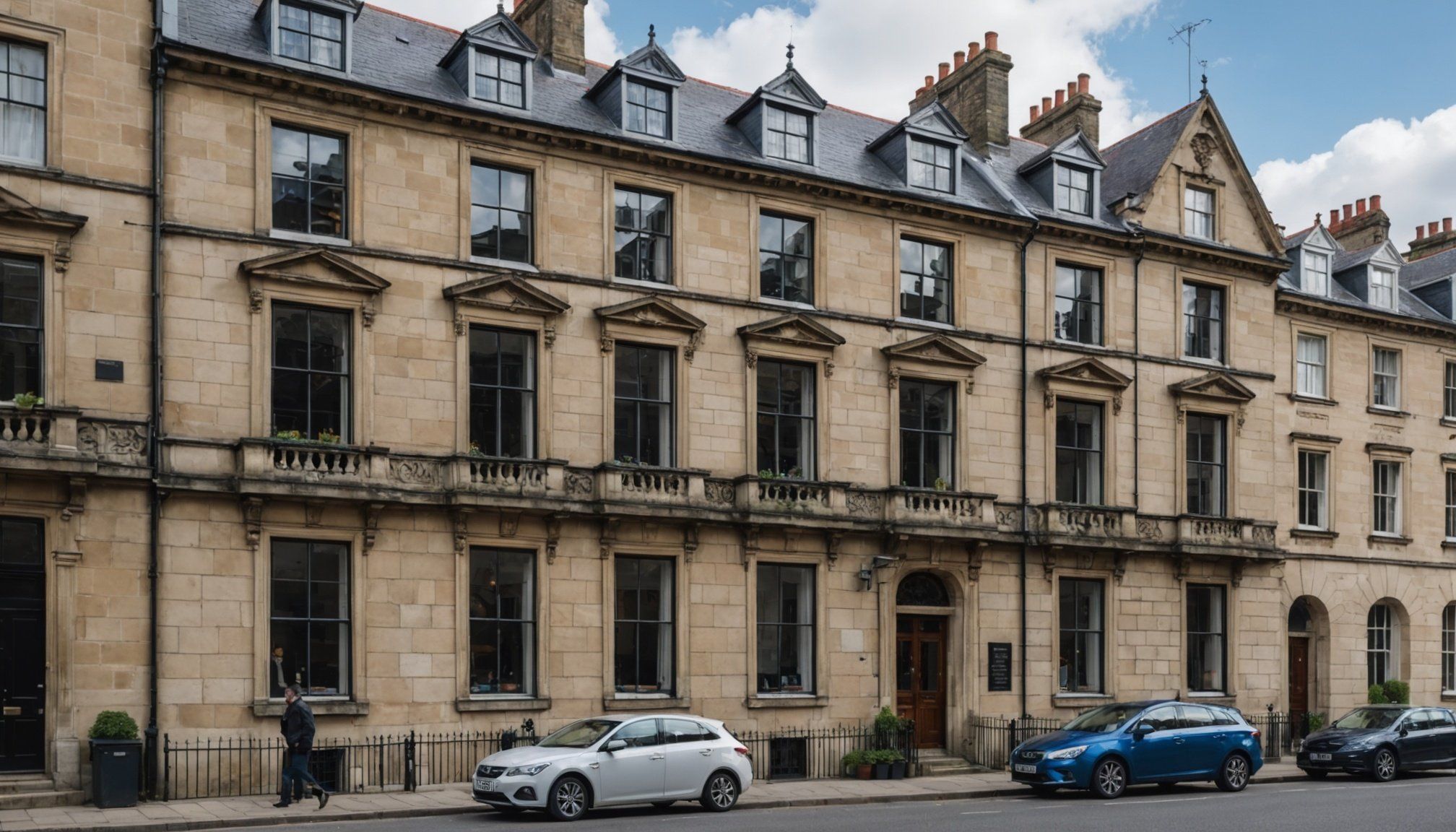Navigating the Hurdles of Securing Property Insurance for Heritage Buildings
When it comes to protecting heritage buildings, the task can be as complex as it is crucial. These historic structures are not just pieces of real estate; they are cultural treasures that require special care and protection. Here’s a comprehensive guide to help you navigate the challenges of securing property insurance for these invaluable heritage properties.
Understanding the Unique Needs of Heritage Buildings
Heritage buildings, whether they are listed or not, have unique characteristics that set them apart from modern properties. These buildings often feature architectural elements that are irreplaceable, making their preservation a top priority.
In parallel : Top Strategies to Successfully Negotiate Your Sky-High Home Insurance Renewal Quote
Historical Significance and Architectural Value
Heritage buildings are more than just homes or offices; they are part of our cultural heritage. Their historical significance and architectural value make them precious, but also more challenging to insure. For instance, a Grade I listed building in the UK would require insurance that covers not only the physical structure but also the preservation of its historical integrity.
Specialized Restoration and Maintenance
Unlike new buildings, heritage properties often require specialized restoration and maintenance work. This can include using traditional materials and techniques to ensure that any repairs or renovations do not compromise the building’s historical authenticity. Insurance policies for these buildings need to account for these unique requirements.
Also to discover : Top Mortgage Solutions for UK Freelancers: Your Ultimate Guide to Financing
Types of Insurance Coverage for Heritage Buildings
Securing the right insurance coverage is essential for protecting heritage properties. Here are some key types of coverage you should consider:
Building Insurance
Building insurance is the most fundamental type of coverage for heritage buildings. It protects the physical structure of the building against various risks such as fire, flood, and other forms of damage. However, for heritage buildings, this coverage must be tailored to include the cost of using traditional materials and techniques in any restoration work[5].
Contents Insurance
Contents insurance is crucial for covering the valuable items within the building, such as antique furniture, artwork, and other historical artifacts. This type of insurance ensures that these items are protected against theft, damage, or loss.
Liability Insurance
Liability insurance is vital for protecting property owners against claims from third parties. For heritage buildings, this could include accidents occurring during tours or events, or damage caused to neighboring properties.
Restoration Insurance
Restoration insurance is a specialized form of coverage that helps in the event of significant damage requiring historical restoration. This type of insurance can be particularly important for listed buildings, where any repairs must adhere to strict preservation standards[3].
Key Considerations for Insuring Heritage Properties
When insuring a heritage property, there are several key considerations to keep in mind:
Listed Building Consent
For listed buildings, any alterations or repairs must comply with local conservation regulations. Insurance policies should include provisions for obtaining the necessary building consent before any work begins. This ensures that the historical integrity of the building is maintained.
Specialist Insurers
Not all insurers are equipped to handle the unique needs of heritage properties. It is advisable to seek out specialist insurers who have experience in insuring historic buildings. These insurers can provide tailored policies that address the specific risks and requirements associated with heritage properties.
Regular Valuations
Heritage properties often appreciate in value over time, making regular valuations essential. This ensures that the insurance coverage is adequate and reflects the current value of the property.
Practical Advice for Property Owners
Here are some practical tips for property owners looking to insure their heritage properties:
Seek Professional Advice
Consulting with a professional insurance broker who specializes in heritage properties can be incredibly helpful. They can guide you through the complexities of insuring a historic building and ensure you get the right coverage.
Keep Detailed Records
Maintaining detailed records of the building’s history, including any restoration work, can be invaluable when making an insurance claim. This documentation can help prove the building’s historical significance and the cost of any necessary repairs.
Join Heritage Organizations
Joining local or national heritage organizations can provide access to resources and advice on preserving and insuring heritage properties. These organizations often have partnerships with insurers who understand the unique needs of historic buildings.
Comparing Insurance Policies for Heritage Buildings
Choosing the right insurance policy for a heritage building involves careful comparison of various options. Here is a table comparing some key aspects of different types of insurance policies:
| Type of Insurance | Coverage | Special Features | Cost |
|---|---|---|---|
| Building Insurance | Physical structure against fire, flood, etc. | Covers traditional materials and techniques | Higher premiums due to specialized coverage |
| Contents Insurance | Valuable items within the building | Covers theft, damage, or loss of historical artifacts | Varies based on the value of contents |
| Liability Insurance | Protection against third-party claims | Essential for public access or events | Moderate to high premiums |
| Restoration Insurance | Historical restoration costs | Ensures adherence to preservation standards | Higher premiums due to specialized nature |
Frequently Asked Questions (FAQs)
Here are some frequently asked questions and their answers to help you better understand the process of insuring heritage properties:
-
Do I need to insure my heritage property if it is not listed?
Yes, even if your property is not listed, it is highly recommended to insure it. Heritage properties, regardless of their listed status, are valuable and require special protection. -
How often should I get my heritage property valued?
It is advisable to get your heritage property valued every 3-5 years to ensure that the insurance coverage reflects its current value. -
Can I use any insurer for my heritage property?
No, it is best to use a specialist insurer who has experience in insuring historic buildings. They can provide tailored policies that meet the unique needs of your property.
Real-Life Examples and Anecdotes
The Restoration of a Grade I Listed Manor
Consider the example of a Grade I listed manor house that suffered significant damage from a fire. The owner had a specialized insurance policy that covered the cost of using traditional materials and techniques for the restoration. This ensured that the historical integrity of the building was maintained, and the manor was restored to its former glory.
The Importance of Detailed Records
A property owner in the UK kept detailed records of the history and restoration work done on their 18th-century cottage. When a flood damaged the property, these records were instrumental in proving the building’s historical significance and securing the necessary insurance payout for the repairs.
Insuring a heritage property is a complex but essential task. By understanding the unique needs of these buildings, selecting the right type of insurance coverage, and seeking professional advice, property owners can ensure that their cultural treasures are protected for generations to come.
As a property owner, it is crucial to remember that insuring a heritage building is not just about financial protection; it is about preserving our cultural heritage. With the right insurance policy and a bit of foresight, you can help safeguard these invaluable properties against the uncertainties of the future.
In the words of a seasoned insurance broker, “Insuring a heritage property is like protecting a piece of history. It requires a deep understanding of the building’s significance and the specialized care it needs. With the right approach, you can ensure that these buildings continue to stand as testaments to our past.”
Selecting the Right Insurance Coverage
Choosing the ideal insurance for your heritage property involves navigating various options. These properties require policies tailored to their unique characteristics and risks.
Types of Coverage Available
Insurance coverage options vary, but not all policies are suitable for heritage properties. It’s crucial to consider heritage property policies that address potential issues unique to older structures. Flexible coverage options, which adapt to particular needs such as restoration costs for historical features, are vital. Policies might include protection against environmental factors that typically affect older buildings.
Finding Specialized Insurers
Locating specialized insurers knowledgeable about heritage properties is essential. Insurers geared towards heritage properties understand the nuances distinct to these structures. To find reliable companies, research insurers with experience in assessing the value and significance of these homes. Additionally, comparing quotes and coverage specifics across providers ensures you get the best value and protection.
Evaluating Policy Terms and Conditions
When evaluating policy terms and conditions, key aspects to consider include potential exclusions and limitations related to heritage properties. Look for clauses concerning the restoration materials’ quality or historical accuracy. Understanding these details ensures you can confidently select coverage that fully protects your structure.
Practical Strategies for Securing Effective Coverage
For property owners looking to secure effective insurance strategies and risk mitigation measures, there are crucial steps to enhance insurability. First, conduct a comprehensive risk assessment. This step is vital in identifying potential hazards and aligning insurance needs with realistic scenarios. By understanding these risks, property owners can select coverage that addresses specific vulnerabilities.
In addition to risk assessments, maintaining thorough documentation is essential. This includes detailed records of the property, any upgrades or repairs, and past insurance claims. Such records facilitate smoother processing when filing claims, helping insurers evaluate situations accurately and expediently.
Here are some practical tips to ensure effective insurance management:
- Regularly update property appraisals and check for new risks that may require policy adjustments.
- Implement property owner tips like installing security systems to deter potential threats, which can also lead to lower premiums.
- Foster communication with your insurer, discussing potential policy gaps and ensuring it aligns with your current needs.
By adopting these strategies and being proactive, property owners can optimize their insurance coverage, effectively mitigating risks while maintaining peace of mind.
Resources for Property Owners of Heritage Buildings
Preserving and maintaining a heritage building can be challenging, but there are numerous support resources available to facilitate this process.
Organizations Offering Support
Several dedicated groups advocate for and assist heritage property owners. These heritage property organizations provide invaluable resources for owners, especially when dealing with insurance advice. They help navigate the unique challenges associated with insuring historic properties, offering guidance on acquiring the right coverage and understanding policy nuances.
Educational Resources and Workshops
There are comprehensive seminars and training sessions available for those looking to understand heritage property insurance better. These workshops often focus on specific issues related to insurance for historic buildings, offering practical solutions. Additionally, online resources provide current information on best practices and evolving insurance trends, equipping owners with valuable knowledge.
Networking Opportunities
Joining forums and professional networks for heritage property owners offers profound benefits. These networks foster a community where experiences and solutions regarding heritage property insurance can be shared. Owners can connect with others facing similar challenges, thus fostering a collaborative environment for problem-solving. Engaging with community groups can enhance the knowledge and resources available to heritage property owners.











